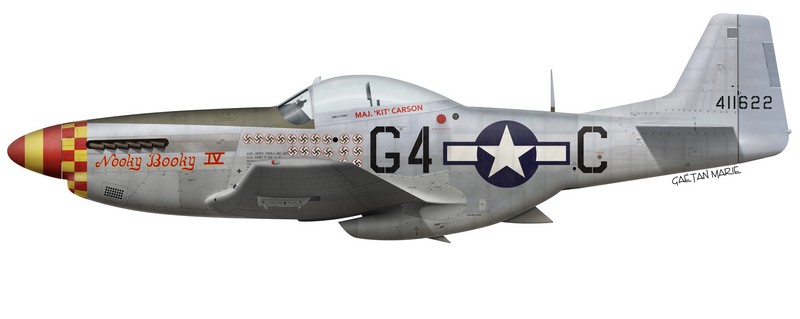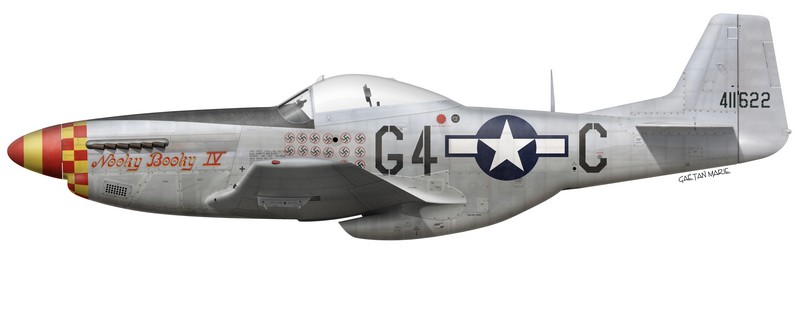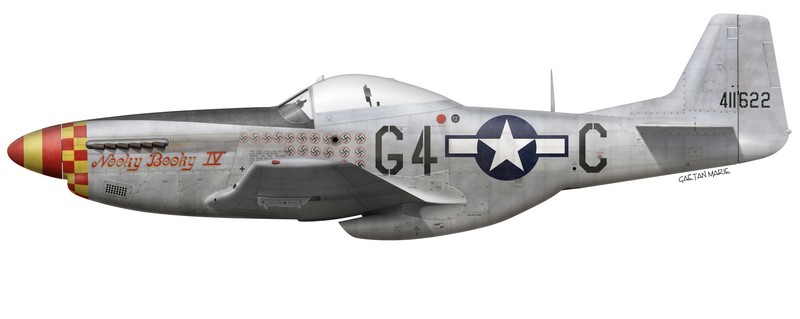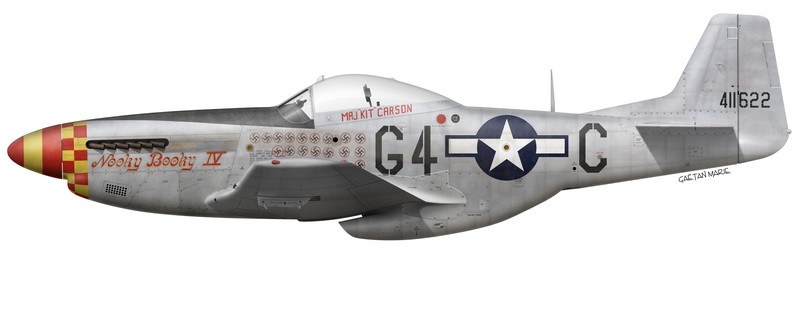I recently had to revisit “Nooky Booky IV”, the fourth and last Mustang assigned to Leonard Kyle “Kit” Carson when he was with the 357th Fighter Group. I had already made a profile of his aircraft, P-51K-5-NT serial number 44-11622, nearly a decade ago:

There are many pictures of “Nooky Booky IV”, which show interesting variations as Carson kept scoring kills and the aircraft aged and was modified. Further examination showed that many corrections were required to my early illustration, and I eventually decided to make three new ones, showing the evolution of the aircraft during its wartime service.
On the first photos, which were probably taken in January 1945, the aircraft sported 18 kill marks in three rows of six.

Later on, more kill marks were added on the top-most row, bringing the total to 22 :

In its final stage, Nooky Booky IV showed interesting variations. Rare foul weather lights were installed. These were a set of four lights added to the fuselage sides, two on each side, in the middle of the roundel star and aft of the engine firewall. Only a few 357th Fighter Group Mustangs were equipped with these lights. The installation of these required moving some of the kill marks, now numbering 23 : nine on the first row and seven on the second and third row.
Also, the pilot’s name was added to the canopy sill. Finally, the exhaust shrouds were disposed of at some point. This was a common occurrence as they tended to break due to heat and vibrations.

A few notes for modellers:
- Aircraft equipped with AN/APS-13 tail warning radar
- Contrary to what is often represented, the kill markings were red circles with black swastikas, which did not have white backgrounds.
- There is no battery vent on the engine cowling panels. What can be seen on some photos are the last digits of the aircraft’s serial number, which were often painted on various panels to make sure they were put on the proper airframe.
- The antenna wire roller on the canopy was not removed, despite no antenna wire being present.
- The canopy was equipped with a plexiglas-framed rear-view mirror. It seems the canopy was of the 3rd / “Late Inglewood” type. The canopy opening button was the early, square type, not the larger and later type.